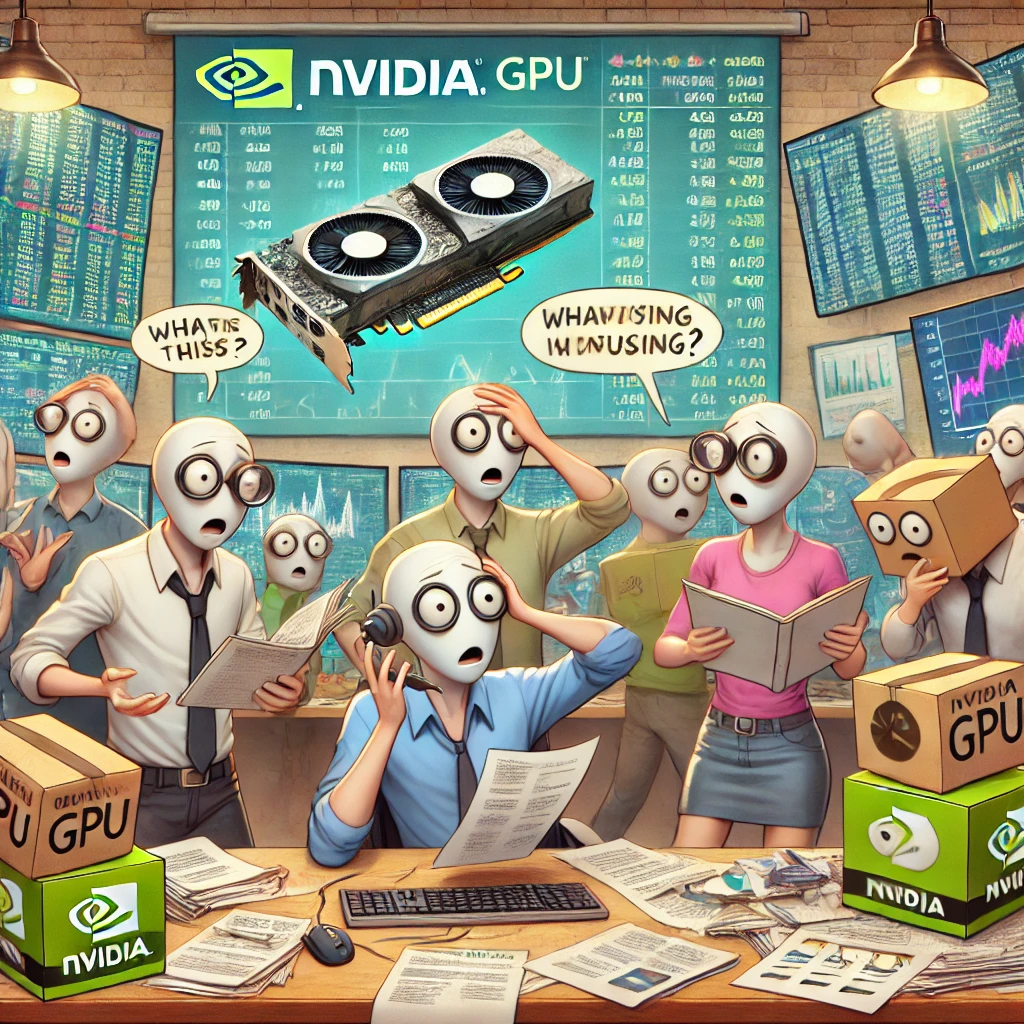💰 Wall Street’s $11 Billion Gamble on AI: How GPU-Backed Loans Are Fueling the Future of AI (and the Risks They Bring)

As the demand for AI technology explodes, Wall Street is backing an unconventional financing method: lending billions to tech companies with Nvidia GPUs as collateral. Major financial players have already extended over $11 billion in these GPU-backed loans, providing critical funding for companies like CoreWeave and Lambda Labs to expand their AI capabilities. But while this high-stakes financial innovation is making waves, questions are surfacing about the risks tied to this unique form of asset-backed financing. Here’s a deep dive into how these loans work, why they’re trending, and what potential challenges lie ahead for investors and tech companies alike.
🚀 AI Hardware Financing 101: What Are GPU-Backed Loans?
With Nvidia’s cutting-edge GPUs like the H100 and A100 powering AI breakthroughs, the high demand for these chips has made them valuable financial assets. Companies developing generative AI models rely on these GPUs for high-performance computing but face steep costs—up to $40,000 per chip. To fund these acquisitions, Wall Street is offering loans secured by the GPUs themselves, allowing tech companies to scale faster than ever without exhausting their cash flow or waiting on traditional investment.
🔍 Why Nvidia GPUs Are Driving Wall Street’s AI Investment
Nvidia’s GPUs have become the cornerstone of AI infrastructure. These powerful chips support the parallel processing required for deep learning models, such as those used in natural language processing (NLP) and computer vision. In fact, Nvidia’s dominance in the GPU market has turned its chips into prized assets, as essential to the AI industry as servers are to the cloud.
By offering GPU-backed loans, banks are betting on the continued rise of AI. These loans are not only financing high-stakes technological development but also betting that Nvidia’s GPUs will retain their high value, creating a solid foundation for repayment. For financial institutions, the lucrative potential of AI makes these loans a calculated risk, while companies can expand their capabilities without immediate cash constraints.
⚠️ The Risks of GPU-Backed Financing: What Could Go Wrong?
As exciting as GPU-backed loans are, they come with significant risks. Here are some of the key challenges facing lenders and tech firms as this trend grows:
- Rapid Depreciation: Unlike real estate or traditional machinery, technology hardware depreciates quickly. The fast-paced development in AI could make today’s GPUs outdated within a few years, meaning that the collateral value may drop before the loan is repaid.
- Market Volatility: While AI is booming now, it remains a volatile sector with evolving regulations, market demands, and potential ethical considerations. A slowdown or sudden regulation in AI could impact revenue streams for borrowers, affecting their ability to repay.
- Repossession Complications: If a company defaults, financial institutions may repossess GPUs. However, specialized tech equipment can be challenging to liquidate, especially if the AI industry cools down or more advanced chips render older models obsolete.
- Regulatory Risks: With governments worldwide increasingly scrutinizing AI’s implications on data privacy, ethics, and labor markets, unexpected regulations could hamper AI companies’ ability to maintain steady growth, impacting their loan repayment potential.
As Emad Mostaque, an AI industry expert, aptly put it, “AI will transform industries, but not every AI company will survive.” While the AI sector is thriving, the fast pace of innovation and regulation mean that these loans are high-stakes.
🏦 What This Means for the Future of Tech Financing
Despite the risks, GPU-backed loans could redefine tech financing, particularly in hardware-intensive fields like AI. The success or failure of these loans will set a precedent, influencing how financial institutions approach tech investments in the future. If AI’s growth continues, this financing model could expand, offering new opportunities for tech companies to scale without relying solely on venture capital.
🌐 Key Takeaway: GPU-Backed Loans—Game-Changer or Financial Gamble?
Wall Street’s $11 billion bet on GPU-backed loans showcases its confidence in AI’s potential, but it’s not without its challenges. With risks from rapid depreciation to market instability, the stakes are high for both lenders and tech companies. As this trend unfolds, it could signal a transformative shift in tech financing—or a warning for those moving too quickly into uncharted territory.
